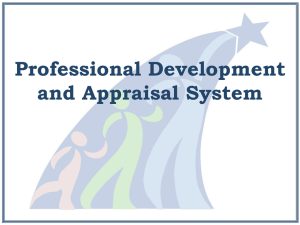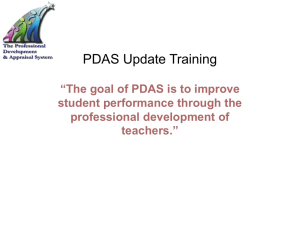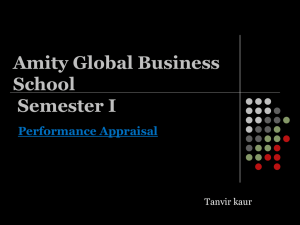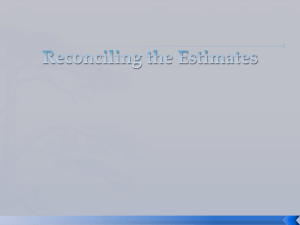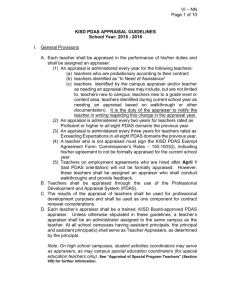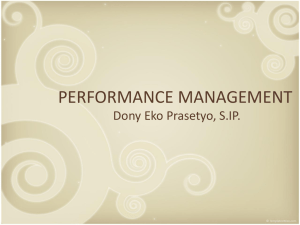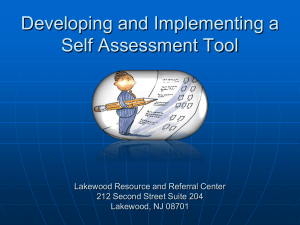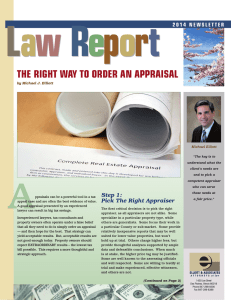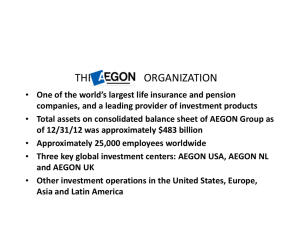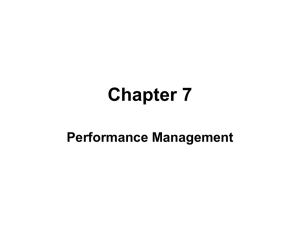PDAS Teacher Orientation
advertisement
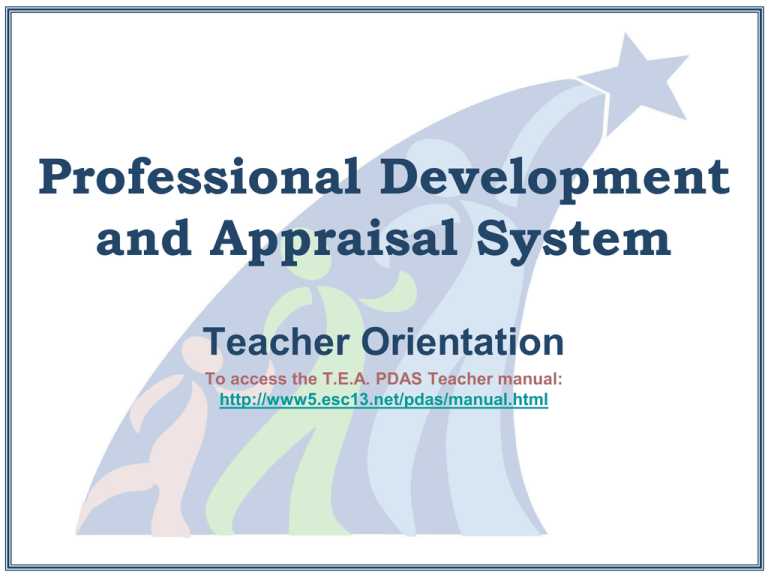
Professional Development and Appraisal System Teacher Orientation To access the T.E.A. PDAS Teacher manual: http://www5.esc13.net/pdas/manual.html PDAS Teacher Orientation ► A school district shall ensure that all teachers are provided with an orientation of the Professional Development and Appraisal System (PDAS) no later than the final day of the first three weeks of school and at least three weeks before the first observation. ► Your understanding of the information in this orientation will be greatly enhanced by your active participation. 2 Overview of the System This presentation provides an overview of the elements of the PDAS system and its goal: “…to improve student performance through the professional development of teachers.” 3 PDAS Characteristics ► Learner Centered ► Aligned ► High Standard of Proficiency ► Teacher Growth and Teacher Improvement ► Collaboration 4 Appraisal Process Steps ► Teacher Orientation ► Teacher Self Report (TSR) ► Formal Classroom Observation ► Walkthroughs ► Student Performance as seen in Campus Performance Rating and AYP ► Summative Annual Report/Conference 5 APPRAISAL PERIOD TIME LINE SCHOOL CALENDAR YEAR First 12 Weeks Teacher Orientation • Within 1st 3 weeks • Observations no earlier than 3 weeks after this orientation Teacher Self Report, Part I • No later than three weeks after orientation Second 12 Weeks Third 12 Weeks Last 15 Days of INST. Teacher Self Report II & III At least two weeks prior to Summative Conference Formal Observation • Minimum of 45 minutes or shorter segments • Written summary within 10 working days • Advanced notice may be given/NOT REQUIRED. • Follow district APPRAISAL CALENDAR • May have pre- or post-conference at request of Teacher or Appraiser. WALKTHROUGH VISITS • To be used at the discretion of the appraiser • Documentation shared with teacher within 10 days ADDITIONAL TIME LINE ISSUES Teacher Response • Within 10 working days (Appraiser may extend to 15) • May rebut in writing or request 2nd appraisal within 10 working days after receiving the OSF or Summative Annual Appraisal Report SUMMATIVE ANNUAL REPORT • 5 working days before conference • No later than 15 working days before last day of instruction • Observation Summary • Walkthrough documentation • Third party/Teacher documentation • Completed TSR SUMMATIVE CONFERENCE • No later than 15 working days before last day of instruction • May be waived in writing by Teacher, NOT APPRAISER • If Appraiser is not administrator on campus, principal/asst. or designated supervisory staff will participate. 6 Classroom Centered Domains Domain I ► “Active, successful student participation” in Domain I Title. ► “Engaged in learning” Criterion 1. This is a critical attribute. ► “Successful in learning” in Criterion 2. 7 Classroom Centered Domains Domain II ►Domain II- Learner Centered Instruction. ►Highlight the domain title and criterion. 8 Classroom Centered Domains Domains III, IV, and V ► Domain III- Evaluation and Feedback on Student Progress ► Domain IV- Management of Student Discipline, Instructional Strategies, Time, and Material ► Domain V- Professional Communication ► Highlight the domain title and criterion. 9 Classroom Centered Domains Domain V ► It is unlikely that appraisers will observe all of the criteria in Domain V in the classroom. ► Identify which criteria are likely to be seen in the classroom and which are not. 10 IMPORTANT TO KNOW Your appraiser may not have evidence to rate every criteria in Domain V on the OSF. In the formal observation, some of the criteria may not have been observed in the classroom. 11 Professional Development Domain VI ► Domain VI- Professional Development ► Inference cannot be used in Domain VI. ► Remember, “The goal of PDAS is to improve student performance through the professional development of teachers.” 12 “Just Do It” Domain VII ► Domain VII- Compliance with Policies, Operating Procedures, and Requirements ► In Domain VII, inference can be used to score “Proficient” only if there is no evidence of non-compliance with policies. 13 Improvement of Academic Achievement of All Students on Campus Domain VIII ► Domain VIII- Improvement of Academic Achievement of All Students ► According to state law, student performance must be included in each teacher’s appraisal. 14 Criterion 10 Domain VIII PLUS 10. Campus Performance Rating of: A . Exemplary Recognized Academically Acceptable Academically Unacceptable B. Meets AYP *Needs Improvement = = = = 4 2 1 0 ______ ______ ______ ______ = = 1 0 ______ ______ Total A + B________ *If needs improvement, list in the spaces below Indicators from page 6. ____________________ Participation ____________________ Graduation Rate/Attend Teacher’s 1st Year on Campus Total: 37 to 45 23 to 36 7 to 22 0 to 6 __________________ Final Total Domain VIII Performance __________________ Participation & Performance (Sum of 1-10) Teacher’s Subsequent Years on Campus Exceeds Expectations 40 to 50 Proficient 24 to 39 Below Expectations 8 to 23 Unsatisfactory 0 to 7 15 Continuous Improvement Process Needs Assessment • Data collection • Analysis Summative Evaluation Goals & Objectives Quality Ongoing Formative Evaluation Strategies & Activities Student Performance Professional Development & Sustained Support Implementation • Who? • What? • What do we need? 16 Teacher Self Report (TSR) The TSR: ►Gives you an opportunity to have input into your appraisal process. ►Serves as a platform to align instruction. ►Is a reflective tool. 17 Classroom Observation ► The formal observation will take place between 9-12-11 and 11-4-11, is arranged with the teacher in advance, and is a minimum of 45 minutes. New to IISD Teachers will have two formal Observations, one by their Principal, and one by Cara Cooke, IISD Curriculum Director. ► Walkthroughs can take place any time during the year and may be any length the appraiser feels is necessary. Expect Walkthroughs by the Principal, Curriculum Director, and Superintendent. 18 Scoring Factors and Performance Level Indicators ►Critical Attributes ►Quality ►Quantity 19 Quality Scoring Standards (See Scoring Standards Handout) • • • • S trength I mpact V ariety A lignment 20 Strength • • • • Thinking at high cognitive levels Depth & Complexity Significant Content Connecting within/across disciplines & work/life applications • Effective, clear & substantive 21 Impact • • • • • • Promotes student success Effective use of assessments Data-driven decision making Responsibility Reflection Challenging 22 Variety • Varied student characteristics • Differentiated instruction • Support strategies & services 23 Alignment • Curriculum, instruction and assessment aligned with TEKS & district objectives • Targeted instruction • Congruent 24 Quantity ► Can you see it? ► Did it happen? ► How often? ► How many students? 25 Teacher Self Report Parts II and III ►Parts II and III of the TSR give you an opportunity to give your appraiser additional information about your efforts to improve your students’ performance. 26 Summative Annual Conference ►Your summative annual conference will occur within the required timeline, and “…shall focus on the written summative report and related data sources.”* *from §150.1003. Appraisals, Data Sources, and Conferences of the Commissioner’s Rules 27 All that’s left . . . ► PDAS Teacher Checklist Campus completion of orientation TSR, Section I by 8-26-11. Observation and other data - walkthroughs Conference(s) TSR, Sections II & III by 5-4-12. Summative Annual Conference by 2-24-12. ► Questions today? ► Questions later? Please ask! 28 Professional Development and Appraisal System Remember, “The goal of PDAS is to improve student performance through the professional development of teachers.” To access the T.E.A. PDAS Teacher manual: http://www5.esc13.net/pdas/manual.html 29
